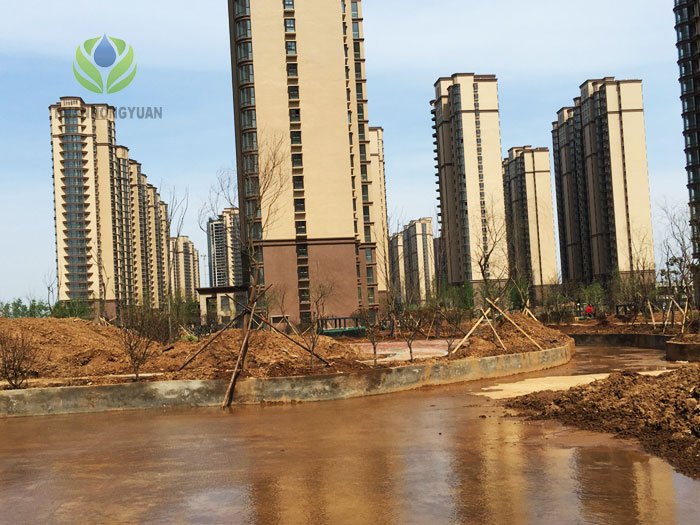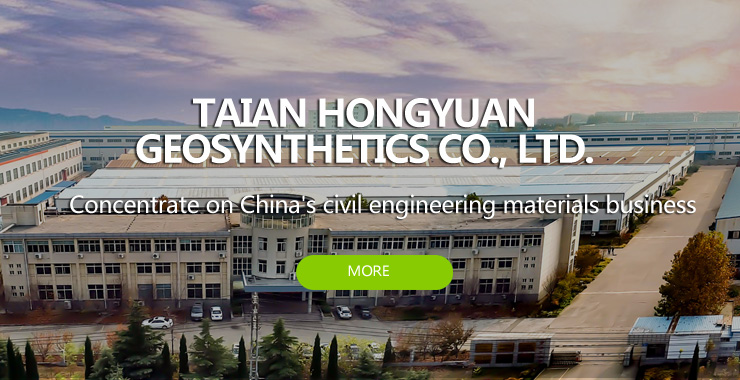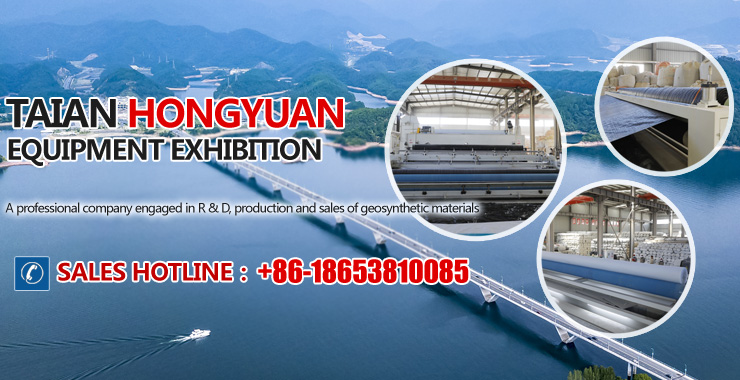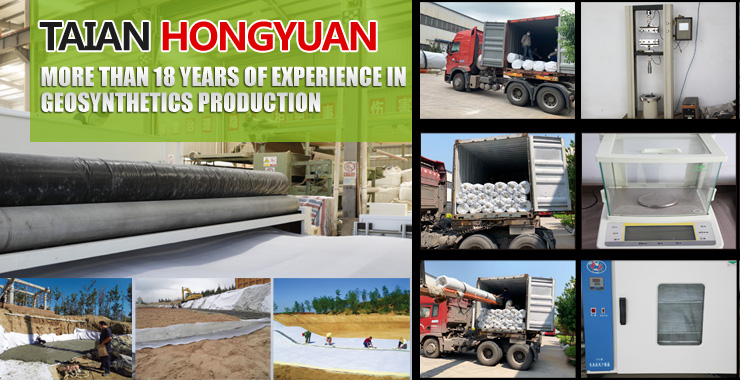Taking the construction of geomembrane composite with non-woven in Huyan tank as an example, it is divided into several steps, such as clearing the foundation, laying the underlying layer, laying the geomembrane composite with non-woven and welding, and covering the protective layer. Construction steps of geomembrane composite with non-woven
1. Clean the base surface of the pool slope
Before laying the geomembrane composite with non-woven, the ribbed hard objects that may damage the geomembrane composite with non-woven on the base surface of the pool slope should be removed, the pits should be filled, and the slope surface should be treated according to the requirements. The slope flatness and compaction must meet the design requirements. Only then can the underlying layer of the geomembrane composite with non-woven be laid.
2. Laying of the underlayer
The underlayment of geomembrane composite with non-woven in Huyan reservoir is a coarse sand underlay with a thickness of 20cm. When laying the sand cushion layer, use long-arm backhoe and belt conveyor to feed the ice-cutting platform foundation and the pool bottom to the slope surface respectively, use the shovel to pave it flatly, and then sprinkle water to compact it. The relative density of the sand cushion layer after compaction meets the design requirements The geomembrane composite with non-woven can be laid later.
3. Welding test of geomembrane composite with non-woven
The joint of the geomembrane composite with non-woven should be tested on site to determine the parameters such as welding temperature, walking speed of the welding machine, temperature adjustment coefficient, etc. The site construction can be carried out after the test results are approved.
4. Laying of geomembrane composite with non-woven
The laying of geomembrane composite with non-woven consists of four processes: paving → bonding of the bottom geotextile → geomembrane welding → welding quality inspection → surface geotextile stitching
4.1 Visual inspection before paving of geomembrane composite with non-woven
The geomembrane composite with non-woven should be inspected for its appearance quality before paving. The geomembrane is not allowed to have trachoma, defects and impurities, and record and repair the mechanical damage and other defects that occur, and replace it seriously.
4.2 Laying method of geomembrane composite with non-woven
The laying of geomembrane composite with non-woven is divided into two parts: pool slope laying and pool bottom laying. When laying, the construction should be carried out in a weather with a temperature above 5 ° C, a wind force below 4 and no rain or snow, in accordance with the order of the pipeline operation, and manual laying is adopted. Laying method: After passing the acceptance check, the pool slope rolls from top to bottom and connects with the geomembrane composite with non-woven at the bottom of the pool using a T-shaped connection. In order to ensure the overall quality of the waterproof layer, avoid the formation of cross seams. During the laying process, the operator should wear flat-bottomed shoes or soft rubber shoes. The machine should not crush the geomembrane and its protective layer. If the geomembrane is damaged during construction, it should be repaired in time.
4.3 Problems to be noted in welding
The bottom geotextile of the geomembrane composite with non-woven is bonded with a hot air welding gun, and the geomembrane is welded by the hot melt welding method. In order to ensure the welding quality, the welding should be carried out in the factory as much as possible. It must be spliced at the construction site, the construction quality of the splicing site must be well controlled, and on-site inspection and careful inspection should be done. After the welding of the geomembrane is completed, the top layer geotextile is sutured after passing the inspection. The top layer geotextile is sutured by a portable sewing machine and sutured by Nylon thread. At the joint of the geomembrane, pay attention that the membrane above the slope on the same section should be pressed above the membrane below.
4.4 Overlay protective layer
The protective layer overlying the Huyan reservoir is composed of sand cushion, graded crushed stone and concrete prefabricated blocks, with thicknesses of 20cm, 30cm and 15cm, respectively. After welding the geomembrane composite with non-woven and passing the quality acceptance, the sand cushion layer, graded crushed stone and concrete prefabricated blocks should be laid in time to prevent its easy aging and other factors caused damage under ultraviolet irradiation.

| Previous:Precautions for GCL construction | next:Construction notes of GCL |




 Tel
Tel
 Products
Products
 Contact
Contact
 Home
Home